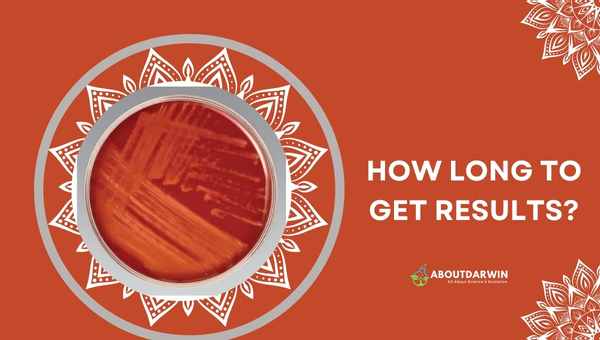Physical Address
304 North Cardinal St.
Dorchester Center, MA 02124
Navigating the labyrinth of medical terminology can be a daunting task. And if you’ve encountered the term “SXT Test,” it might have left you a bit puzzled. But don’t worry; I’m here to break it down for you.
Let me start by saying that the SXT Test is more than just an obscure term in medical jargon; it plays a vital role in identifying specific kinds of bacterial infections.
This article will provide you with an overview of the principle behind this test, how it’s conducted, its uses, and how to interpret results, ensuring that the next time you hear this term, you aren’t left scratching your head, wondering what on earth it means!
Contents
The SXT Test, also known as the Trimethoprim/Sulfamethoxazole Susceptibility Test, is grounded on the principle of antibacterial sensitivity. In essence, this principle harks back to exploring which prescribed antibiotics a given strain of bacteria reacts to—or conversely, which ones it has successfully developed a resistance against.

Understanding this test’s underlying principle is vital when you consider its practical application in medical diagnosis.
By identifying the susceptibility or resistance of bacteria to Trimethoprim/Sulfamethoxazole (the SXT antibiotic combination), we can take a more targeted approach to treat the infections they cause—leading to improved recoveries and reduced chances of further antibiotic resistance development.
You might be wondering why the SXT Test holds such prominence. Well, the answer lies in its invaluable role in treating bacterial infections. Its ability to uncover which antibiotics a bacterium is susceptible to helps doctors prescribe the right medication for a more precise attack on the condition.
In today’s era, where antibiotic resistance is increasingly becoming a significant concern worldwide, tests like SXT are critical.
They hold power in guiding treatment strategies effectively, reducing unnecessary exposure to different antibiotics and thus preventing the further evolution of antibiotic-resistant superbugs. It’s not just about treatments—it’s about smarter treatments!
Also Read: Cetrimide Agar: Uncover Its Composition, Principle, and More
The SXT test is carried out using bacterial cultures taken from the patient. Let’s dive right into how it works. Technicians use a swab to collect a sample, usually from a suspected infection site. The bacteria from your selection are then nurtured in an environment that encourages their growth, typically a nutrient-rich broth or agar.
Once colonies of the bacteria have formed, they’re exposed to disks infused with trimethoprim-sulfamethoxazole (the SXT antibiotic combo). These disks are placed on an agar plate where the bacteria has been spread evenly. The plate is incubated and observed for zones of inhibition – areas where the antibiotics have prevented bacterial growth.
When it comes to preparation for this test, there’s honestly not much for you to do! Your role revolves around providing a viable sample for testing – typically something like bodily fluids or tissue, depending on your symptoms and what your doctor suspects might be causing them.
So, all you really need to do is show up at your healthcare provider’s office as advised! However, it may be beneficial to discuss any current medications or supplements you’re taking with your healthcare provider prior to testing, as these could potentially interfere with test results.
Also Read: Isostatic Rebound: Uncovering Post-glacial Rebound Process
Now, let’s talk about why you might need an SXT test. This particular test comes into play when a healthcare provider suspects a bacterial infection that could potentially be treated with the antibiotic combination of trimethoprim-sulfamethoxazole.
The infections treated by these antibiotics include, but are not limited to, urinary tract infections or UTIs, middle-ear infections in children, long-lasting or chronic bronchitis, and pneumonia in people with weak immune systems.
As for who should consider taking this test—it’s really at the discretion of your healthcare provider. Suppose they suspect that an infection caused by bacteria is the source of your ailment and want to prescribe appropriate antibacterial therapies. In that case, you’re a suitable candidate for an SXT test.
Even if it’s often used when common antibiotics fail to treat an ongoing infection, suggestion arises of possible bacterial resistance against regularly prescribed antibiotics. The key takeaway: trust your doctor’s advice! They’ll guide you correctly based on factors like symptoms and medical history.
Also Read: Unlocking Insights: Haemophilus Influenzae Explained in Depth
Let’s talk about interpreting the results from an SXT test, as they may seem unclear if you’re not familiar with microbiological testing. If the impact is ‘positive,’ this doesn’t mean something bad like it usually suggests in medical terminology.
It actually indicates that the bacteria present in your sample are susceptible to trimethoprim-sulfamethoxazole – a good thing because it means this antibiotic combo can be used to treat your infection effectively!
On the other hand, negative results indicate that the bacteria are resistant to these specific antibiotics, and another medication will likely be needed for treatment.
The beauty of medical science lies in its ever-advancing nature, and speed definitely plays a vital role in it. But remember, diagnostics take time—at least enough for science to do its part accurately! After all, we’re talking about cultivating bacteria here.

SXT test results should usually become available within 48-72 hours after your sample is taken since bacterial culture growth takes about 1-2 days. However, actual turnaround time might vary depending on lab workload or unforeseen issues. If there’s a delay past this window, though, don’t hesitate to get in touch with your healthcare provider.
Also Read: Germ Tube Test Explained: Unveiling Microbial Secrets
The SXT test is primarily utilized to determine the susceptibility or resistance of bacteria to the antibiotic combination of trimethoprim and sulfamethoxazole, guiding effective treatment strategies for bacterial infections.
A positive result in an SXT test signifies that the bacteria present in the sample are susceptible to trimethoprim-sulfamethoxazole, suggesting effective treatment can ensue with this antibiotic combo.
Generally, there’s no specific preparation needed on your part before taking an SXT test—just ensure you provide a viable sample. However, sharing information about any current medications or supplements with your healthcare provider is advisable as these could influence results.
Yes, bacteria can potentially become resistant to any antibiotic, including the SXT (trimethoprim/sulfamethoxazole) combination. This is why the SXT test is crucial, as it determines whether a particular strain of bacteria has developed resistance to this drug combination.
Usually, you should receive your results within 48-72 hours post specimen collection. The actual time might vary depending on lab processing times and other factors.
Also Read: Unraveling Potato Dextrose Agar (PDA): Principle & More
We’ve traveled quite the journey dissecting the ins and outs of the SXT Test. From understanding its principle, diving into its procedure, and exploring its uses to decoding its interpretation—we’ve covered it all!
I hope this guide has enlightened you about how this powerful test helps in combating bacterial infections more strategically.
The next time you or anyone around you undergoes an SXT Test, remember—the goal is not just to treat but to treat wisely.
By using tests like these, we take a substantial leap forward in our fight against antibiotic resistance, a global concern that seeks crucial attention today. Through knowledge and understanding comes better health. Until next time – stay safe and informed!